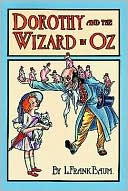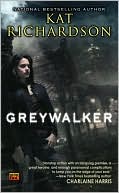Judging Other Writers
Congratulations to tenantofwildfel, who was selected by random.org to win a free book in yesterday’s giveaway!
#
Today’s musing was sparked by Catherine Hellisen’s post here wherein she talks about how selling a book to a major publisher does not, in fact, make you better than someone who sold to a small press or self-published or writes in that other genre or even that person who sold to Publish America.
All of which is absolutely true.
That said, there are assumptions I can and do make about stories based on where and how they were published…
- If your book is published by DAW (my publisher) or another major publisher, I assume that someone liked your book and thought it would sell well enough to offer you thousands of dollars up front for the right to publish it.
- If your book is published by a small press, I assume someone liked it and thought it would sell well enough to invest their time, money, and resources in publishing it.
- If your book is self-published, I assume you can finish a novel manuscript book and follow the instructions to upload it to Amazon, B&N, etc.
- If your book is published by a vanity press, I assume you can finish a novel book.
- If your book is published by Publish America, I assume you can finish a novel book and either have no interest in doing any research whatsoever, or else you simply refuse to listen when others share their experience and warnings.
There are others, of course. For example, in categories one and often two (depending on which small press), I assume the book was probably edited, professionally typeset, and so on.
I believe these are reasonable assumptions. None of them are judgments on an author or his/her particular story. Nowhere do I assume that your book bites the wax tadpole.
However, from my own reading experience, I know that the odds of me tossing a self-published or micropress book aside unfinished are much higher than the odds of doing the same with a book from a major publisher. Does that mean I can pick up a random self-published book and declare it to be crap without reading? Of course not. But if you give me a choice between a Tor book and a self-published book, then all else being equal, I’ll pick up the Tor. Because historically, those books have been more enjoyable to me.
Does getting a deal with Tor make you a better person? Not at all. Tor publishes assholes just like any other publisher.
Does it make you a better writer? Nope. Writing better stories makes you a better writer.
But are my odds of finding good stories higher with a major publisher’s titles than with Publish America’s list? Without a doubt.
Any questions?
I’ll close with one last judgment. If you say “There’s no such thing as a good or bad story; it’s nothing but personal preference!” then I’ll judge you to be either naive or silly, and sentence you to thirty days mining slush for a publisher.
Discussion and debate are welcome, as always.
—
ETA: Tweaked the wording for my assumptions, since “book” is more inclusive and accurate than “novel.” Thanks, serialbabbler.






 With one week until the release of The Snow Queen’s Shadow
With one week until the release of The Snow Queen’s Shadow  My six-year-old and I just finished reading the fourth Oz book: Dorothy and the Wizard in Oz. He’s still enjoying the series, and we did our review together about ten minutes after we closed the book.
My six-year-old and I just finished reading the fourth Oz book: Dorothy and the Wizard in Oz. He’s still enjoying the series, and we did our review together about ten minutes after we closed the book.




 I’d been toying with the idea of a detective who worked for ghosts for quite a while, but the idea never quite gelled into something exciting until my husband and I moved to Seattle in 1994. Here I found an atmosphere and geography that just seemed to pump new life into the idea and connect disparate elements I hadn’t thought of before. Now the story actually had a shape, but I didn’t get it on paper until Fall of 2000. (yeah, we all still printed everything out back then….)
I’d been toying with the idea of a detective who worked for ghosts for quite a while, but the idea never quite gelled into something exciting until my husband and I moved to Seattle in 1994. Here I found an atmosphere and geography that just seemed to pump new life into the idea and connect disparate elements I hadn’t thought of before. Now the story actually had a shape, but I didn’t get it on paper until Fall of 2000. (yeah, we all still printed everything out back then….)